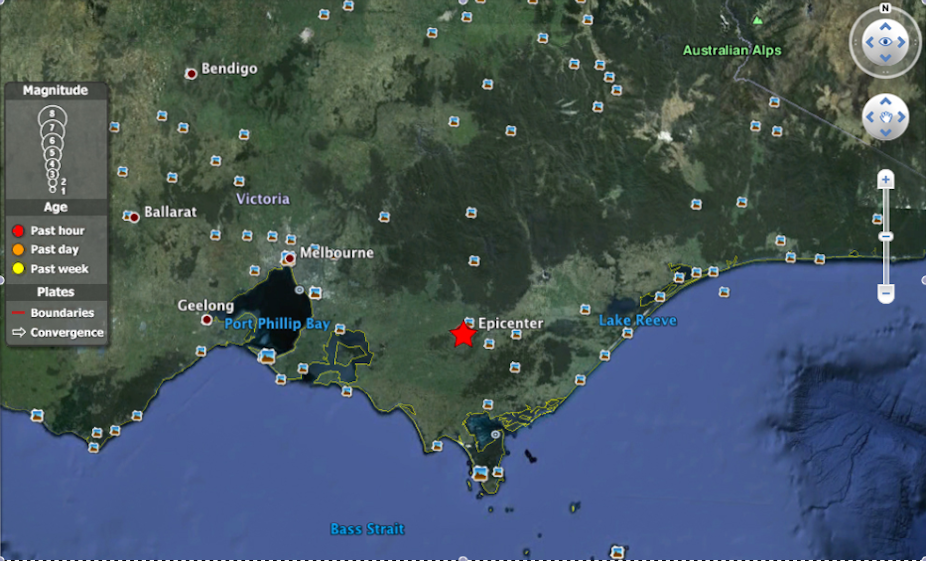A magnitude-5.3 earthquake that shook the Latrobe Valley just before 9pm last night was one of the most severe to hit Victoria in the past century, seismologists said.
The earthquake, which had its epicentre 16 kilometres south-west of Moe - about 120 kilometres south-east of Melbourne - and 9.9 kilometres below ground, rattled towns in the area at 8.53pm, and was felt as far away as Wagga Wagga in NSW. In some places the shaking lasted for about 30 seconds. So far more than 60 aftershocks have followed.
Adam Pascale, Head of the ES&S Seismology Research Centre in Victoria, said the quake was felt strongly in Moe and the surrounding towns of Traralgon, Trafalgar, Churchill and Warrigal. It was also felt throughout Melbourne and in the Western District.
A State Emergency Service spokesman, Lachlan Quick, said there had been more than 30 calls for help, mainly in Gippsland, but no reports of injury. Damage to buildings had included cracks in walls and other minor incidents. Several shops reported that products had been knocked off shelves.
Mr Pascale said the quake was smaller than “the significant Newcastle earthquake of 1989, which was magnitude 5.6. The difference is that this event didn’t occur in a highly populated area.
"We’ll expecting aftershocks for some days and possibly weeks to come. We can’t rule out an equivalent or larger event in the sequence. There is no way to predict the magnitude of earthquakes to come.”
Associate Professor Peter Betts, from Monash University’s School of Geosciences, said the fault beneath Moe was very old and deep, and had probably been active about 400 million years ago.
“There are millions of faults across the Australian continent,” Professor Betts said. “The Australian continent is made up of many fragments that have amalgamated over time, and those fragments are cut by faults, which are basically cracks in the earth. Tectonic forces essentially drive plates around the globe, and every now and then pressure on those faults yield and break.
"Fortunately for Australia we’re sitting right in the interior of a plate, and most of the largest earthquakes occur at the plate boundaries. So what we tend to see is lots of little earthquakes - magnitude 2 and 3 - a few over magnitude 4 and very few at the level of magnitude 5 or more. So we’re not going to see something that’s comparable to what we saw in Japan last year.”
The Newcastle earthquake was two to three times more intense than the one that shook Victoria last night, he said.
The last big earthquake to hit Victoria was a 5.4-magnitude quake in 1982, at Wongungarra, 100 kilometres north of last night’s epicentre.

